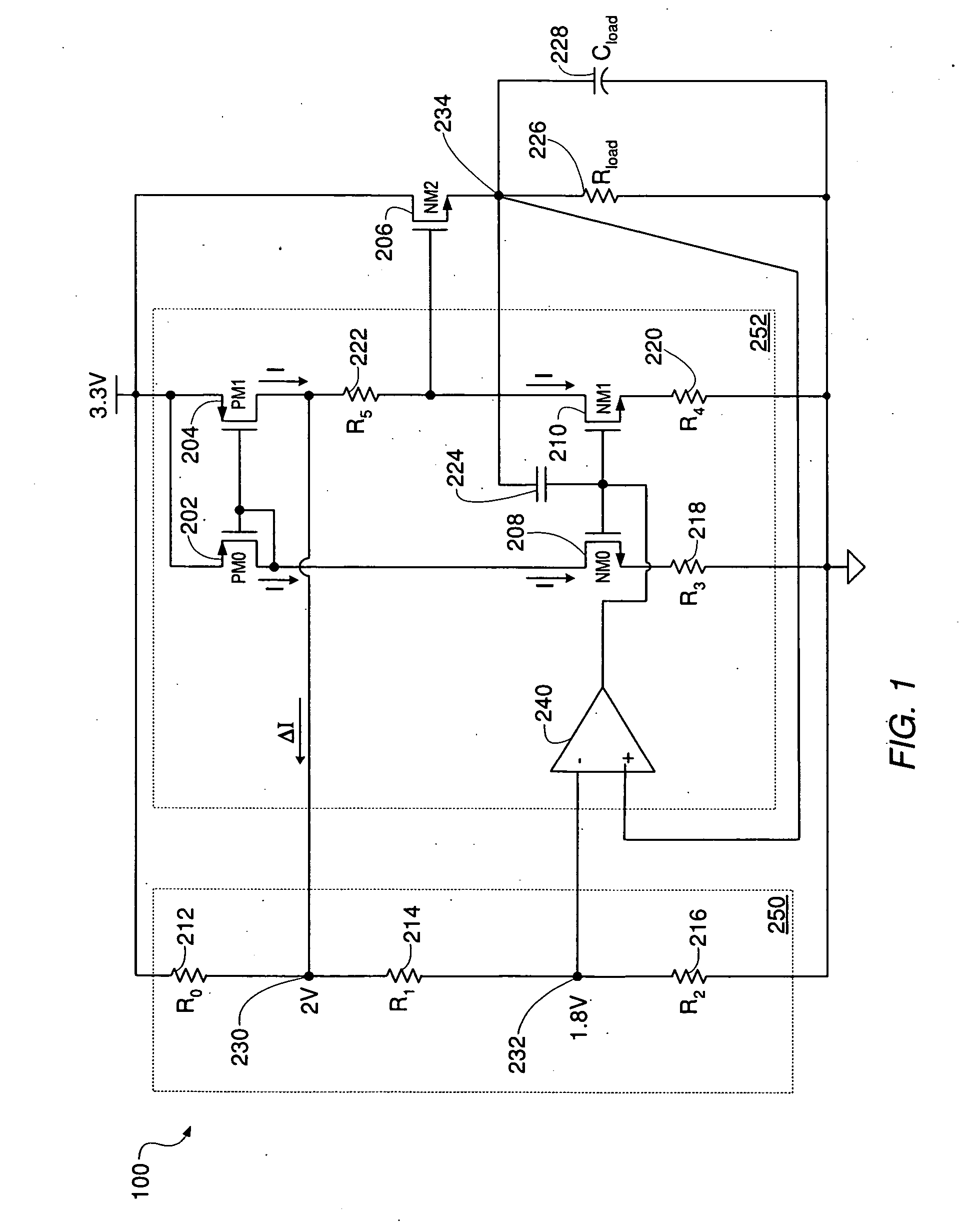Voltage regulator with inherent voltage clamping
a voltage regulator and clamping technology, applied in the direction of electric variable regulation, process and machine control, instruments, etc., can solve the problems of complex design problems, over-voltage of regulated output, etc., and achieve the effect of compact and small area
- Summary
- Abstract
- Description
- Claims
- Application Information
AI Technical Summary
Benefits of technology
Problems solved by technology
Method used
Image
Examples
Embodiment Construction
[0016]FIG. 1 shows one embodiment of a compact voltage regulator circuit 100 with inherent clamping. Voltage regulator circuit 100 may be used to provide a regulated secondary supply voltage from a primary voltage supply in a system that comprises partitions requiring two different supply voltages, thereby obviating the need for a second voltage supply. For example, a temperature sensor system may require a 3.3V supply voltage, while the monitored circuit(s) may comprise transistor devices operating from a 1.8V supply voltage. By way of example, voltage regulator circuit 100 is shown to operate from a primary supply voltage of 3.3V in order to provide a regulated 1.8V secondary supply voltage at node 234, and comprises a voltage divider circuit 250 and a control circuit 252, driving output transistor 206. Alternate embodiments may be configured with different primary voltage values for providing one of any number of different regulated secondary supply voltages as required by any gi...
PUM
 Login to View More
Login to View More Abstract
Description
Claims
Application Information
 Login to View More
Login to View More - R&D
- Intellectual Property
- Life Sciences
- Materials
- Tech Scout
- Unparalleled Data Quality
- Higher Quality Content
- 60% Fewer Hallucinations
Browse by: Latest US Patents, China's latest patents, Technical Efficacy Thesaurus, Application Domain, Technology Topic, Popular Technical Reports.
© 2025 PatSnap. All rights reserved.Legal|Privacy policy|Modern Slavery Act Transparency Statement|Sitemap|About US| Contact US: help@patsnap.com



